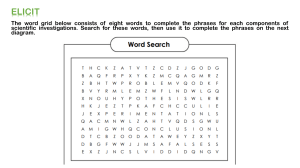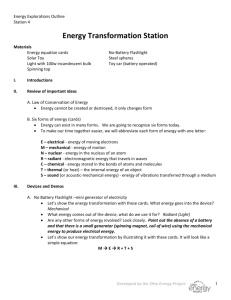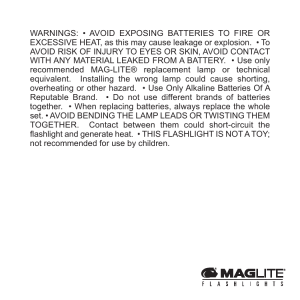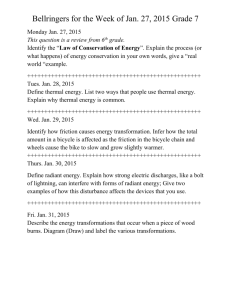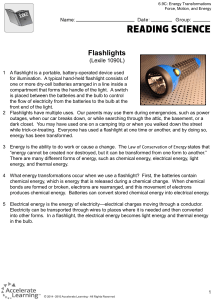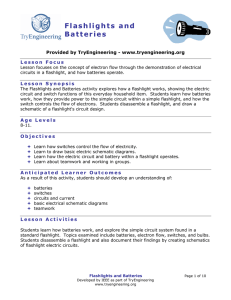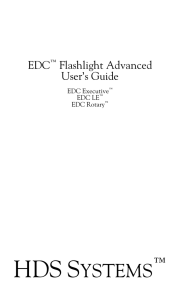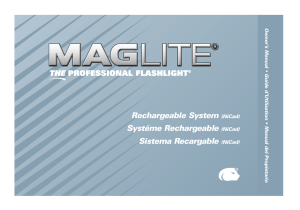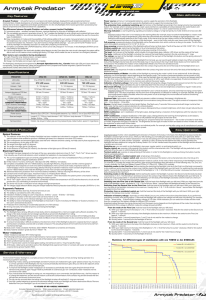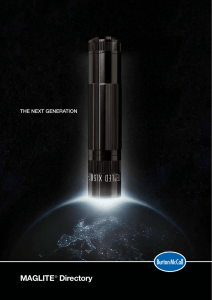Chemical Changed C D B
advertisement
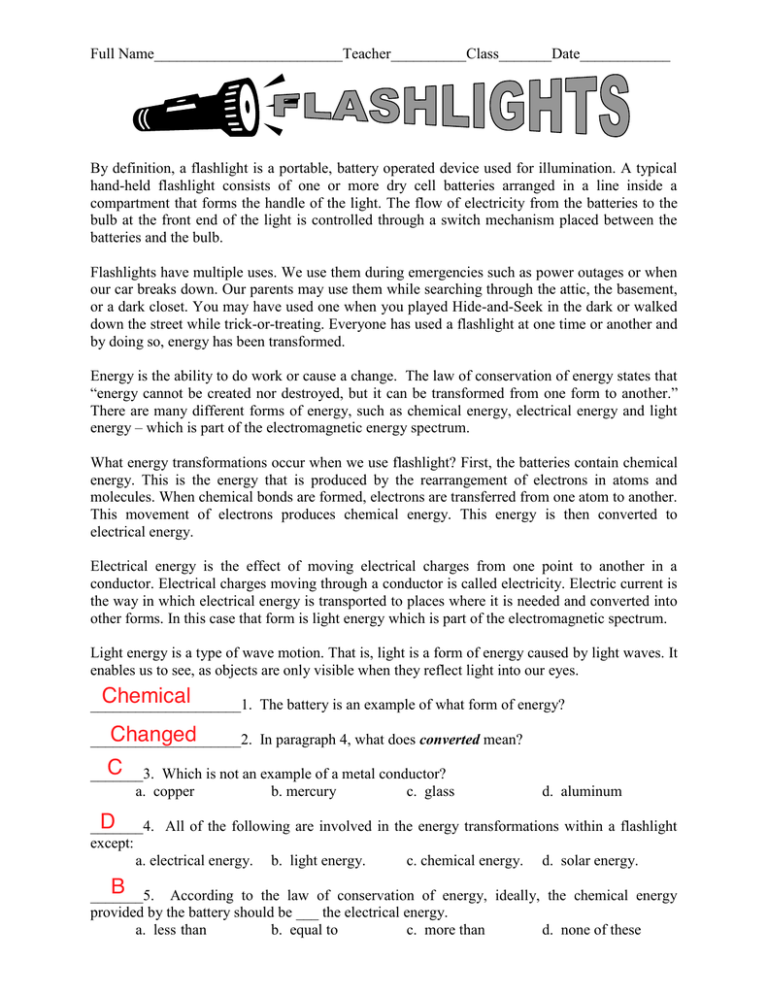
Full Name_________________________Teacher__________Class_______Date____________ By definition, a flashlight is a portable, battery operated device used for illumination. A typical hand-held flashlight consists of one or more dry cell batteries arranged in a line inside a compartment that forms the handle of the light. The flow of electricity from the batteries to the bulb at the front end of the light is controlled through a switch mechanism placed between the batteries and the bulb. Flashlights have multiple uses. We use them during emergencies such as power outages or when our car breaks down. Our parents may use them while searching through the attic, the basement, or a dark closet. You may have used one when you played Hide-and-Seek in the dark or walked down the street while trick-or-treating. Everyone has used a flashlight at one time or another and by doing so, energy has been transformed. Energy is the ability to do work or cause a change. The law of conservation of energy states that “energy cannot be created nor destroyed, but it can be transformed from one form to another.” There are many different forms of energy, such as chemical energy, electrical energy and light energy – which is part of the electromagnetic energy spectrum. What energy transformations occur when we use flashlight? First, the batteries contain chemical energy. This is the energy that is produced by the rearrangement of electrons in atoms and molecules. When chemical bonds are formed, electrons are transferred from one atom to another. This movement of electrons produces chemical energy. This energy is then converted to electrical energy. Electrical energy is the effect of moving electrical charges from one point to another in a conductor. Electrical charges moving through a conductor is called electricity. Electric current is the way in which electrical energy is transported to places where it is needed and converted into other forms. In this case that form is light energy which is part of the electromagnetic spectrum. Light energy is a type of wave motion. That is, light is a form of energy caused by light waves. It enables us to see, as objects are only visible when they reflect light into our eyes. Chemical ____________________1. The battery is an example of what form of energy? Changed ____________________2. In paragraph 4, what does converted mean? C _______3. Which is not an example of a metal conductor? a. copper b. mercury c. glass d. aluminum D _______4. All of the following are involved in the energy transformations within a flashlight except: a. electrical energy. b. light energy. c. chemical energy. d. solar energy. B _______5. According to the law of conservation of energy, ideally, the chemical energy provided by the battery should be ___ the electrical energy. a. less than b. equal to c. more than d. none of these Full Name_________________________Teacher__________Class_______Date____________ The Law of Conservation of Energy states that energy can’t be created or destroyed. Instead it must be converted, changed, or transformed, into another form of energy. Fill in the blanks with the beginning and ending forms of energy in the five examples of energy transfers. Choices: chemical, electric, radiant, sound, thermal, mechanical 1. Event: A flashlight is turned on Radiant/thermal Chemical Electrical ________________ Energy → ________________ Energy + _________________ Energy 2. Event: Turning on a hair dryer Thermal Electrical Energy → ________________ Mechanical ________________ Energy + ________________Energy Sound + ________________Energy 3. Event: Cracking a glow stick Chemical Radiant _________________ Energy → ______________________ Energy 4. Event: Wind Turbine Mechanical Energy → _________________ Electrical ___________________ Energy 5. Event: Microwave heats spaghetti _________________ Energy → _______________ Electrical Thermal Energy + ________________Energy Radiant
